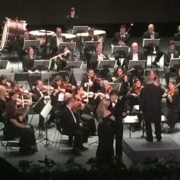How to choose the right violin
/in General/by bluedanWhen Buying a Stringed Instrument for a Beginner or in a Lower Price Range
Be Sure the Size is Right —
For children it’s especially important the instrument size be proportional. This is best determined by an experienced sales person at a shop that deals with violin-family instruments (violin, viola, cello or double bass) or with the help of a string teacher that works with young people. For adults who play the violin, those with smaller hands might consider a 7/8-size which although sometimes hard to find can be worth the effort. Violas come in a variety of sizes from ca. 38 to 42 cm of body length or more. The average seems to be about 16 inches or 40.5 cm. Cellos and their bows come in fractional sizes (similar to violins) while ¾- double basses are fine for most adult players. Smaller size basses are available too.
Generally, look for European instruments and Bows. Chinese instruments and bows are improving all the time but it’s probably fair to say the least expensive instruments and bows a shop offers will be Chinese. These instruments can sometimes be affected by the extreme difference in weather and humidity conditions between the east coast of China and Europe or North America. Instruments made solely in Europe are difficult to find in fractional sizes (3/4 , ½, ¼, etc.) but are often preferred in full sizes. German, Czech, Romanian, Bulgarian, Polish & Hungarian instruments are especially good in the lower price ranges.
Outfit or Individual Elements? It’s usually less expensive to buy a set or outfit (instrument, bow & case) than the individual elements separately. However, buying a better violin (especially in fractional size) can be easily paired with an inexpensive and basic case and
Match the Level of the Bow and Its Price to the Instrument’s. As a rule of thumb, we advise to spend about 20% of the value of a violin, viola, cello or double bass on its bow. If an instrument is 500 Eur or USD, 100 for a bow will make it much more likely to have a qualitative match.
Average and General Weight of Bows
Violin bows (full size) – from 60 to 62 grams
Viola bows – 68 to 72 grams
Cello bows – 78 to 86 grams
Ask the shop to weigh the bow for you, if possible
Shoulder Rests, Rosin and Cleaning and Maintainence Products should also be considered, buying from a knowledgeable and specialized shop. With shoulder rests it’s a good idea to see what the teacher requires for beginners, some go with sponges or other makeshift solutions before they ask students to buy commercial shoulder rest.
Address
Blue Danube Violins
Strozzigasse 31
1080 Vienna
AUSTRIA
Tel: +43 1 405 4030
Tel: +43 (660) 944 1658
Opening Hours
MO - FR 10:00 - 18:00
SAT by appointment


